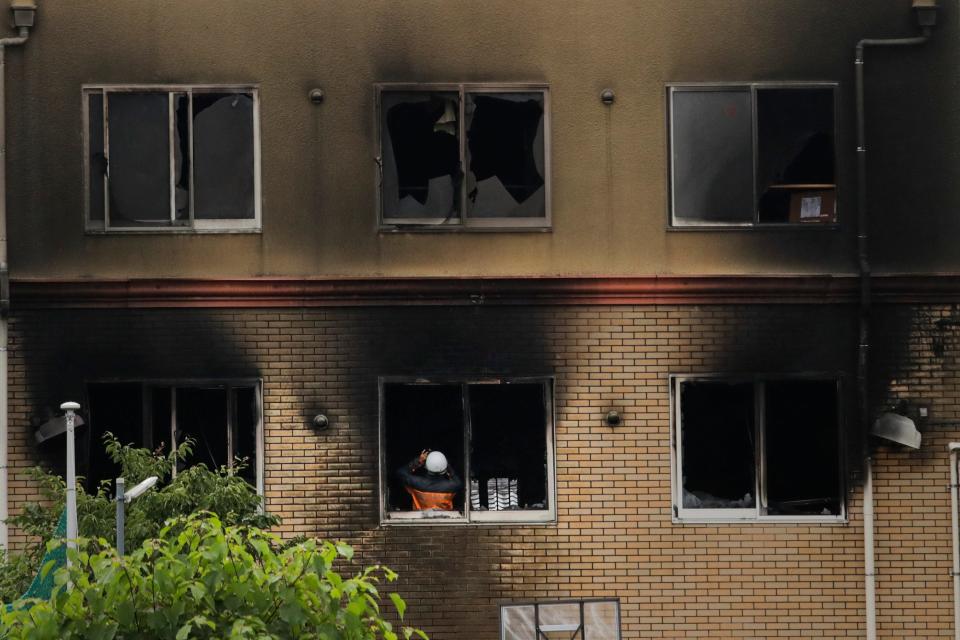Kyoto Animation arson killings didn't get much attention because we couldn't demonize guns
While obsessing over President Donald Trump’s racist rants and his supporters’ hateful chants, Americans could easily have missed the awful news from thousands of miles away in Kyoto, Japan. Last Thursday, as Trump was facing a firestorm over his raucous campaign rally, a 41-year-old man aired his grievance against Kyoto Animation by means of a literal firestorm.
Shouting, “You die!”, the enraged assailant doused the three-story anime studio with gasoline and then set it ablaze. By the time the smoke had cleared, 34 employees — mostly young women — were dead and nearly three dozen were injured.
In terms of the death toll, this was Japan’s worst mass killing in nearly two decades, sending shock waves throughout the island nation. Globally, the impact was deeply felt within the anime community, including those attending an international anime convention held in San Diego. Beyond that, the reaction was hardly commensurate with the horrific nature of the crime.
All mass killings deserve US attention
The limited attention here in the United States cannot be explained away on account of distance. Compare the coverage with that of the mosque shootings last March in Christchurch, New Zealand, a location even farther from our shores. U.S. newspapers and wire services featured the Christchurch massacre five times as much as the Kyoto mass murder.
Sure, there are some differences between the two tragedies in term of victim count and motive. Thursday’s attack involved a personal agenda rather than a political one — never raising the dreadful specter of terrorism. The Kyoto massacre may not have been an act of terror, but the young victims undoubtedly experienced tremendous terror as the flames swelled around them and smoke invaded their lungs.
Mass shootings remain one of the most widely discussed topics here in the United States. By comparison, we just don’t seem to be as unnerved by mass killings carried out by other methods, unless of course they hint of terrorism, be it of foreign or domestic origin.

Guns get more attention
It would be hard to find adults anywhere in this country who do not remember when 12 victims were gunned down at a cinema in Aurora, Colorado, in 2012. It would be equally difficult to find folks outside of Nevada who do recall when 12 victims succumbed to smoke inhalation at a Reno hotel in 2006, when an irate resident set fire to a stack of old mattress and caused the building to become engulfed in flames.
Few outside of New York City likely recall the 87 killed in 1990 at the Happy Land nightclub in a fire deliberately set by a the ex-boyfriend of an employee. The death toll was nearly twice as high as Orlando’s Pulse nightclub massacre in 2016, a crime that remains fresh in our collective memories.
Given the intense focus on mass shootings, there are countless stories citing statistics drawn from any one of the half-dozen databases that have been assembled in recent years in response to the high level of concern. As far as mass killings with other weapons, there is but one ongoing data source that includes them all: The Associated Press/USA TODAY/Northeastern University Mass Killing Database.
Of the 391 U.S. massacres of four or more victims since 2006 contained in the AP/USAT/NU database, 85 (or 22%) involved weapons other than a gun. Of course, none led to calls for banning gasoline and other accelerants or proposals to limit the size of knives. It is the politics and controversy surrounding gun control that highlight mass shootings above the rest.
Lack of attention is lack of respect
Whatever the reason, the lesser attention given to mass killings that do not invoke guns is disrespectful to the victims whose lives are tragically cut short. Is the crime any less serious if there were no gunshots? Are the victims any less dead? In fact, victims of burns, suffocation or stabbing often suffer a much slower and painful death than gunshot victims.
It is surely fruitless to assess the relative severity of mass killings on the basis of weaponry. Our sense of outrage and concern for the victims should be the same whether they died from a firearm or fire.
James Alan Fox is the Lipman Professor of Criminology, Law and Public Policy at Northeastern University, a member of USA TODAY's Board of Contributors and co-author of “Extreme Killing: Understanding Serial and Mass Murder." Follow him on Twitter: @jamesalanfox
You can read diverse opinions from our Board of Contributors and other writers on the Opinion front page, on Twitter @usatodayopinion and in our daily Opinion newsletter. To respond to a column, submit a comment to letters@usatoday.com.
This article originally appeared on USA TODAY: Kyoto Animation killings highlight media preference for gun violence

